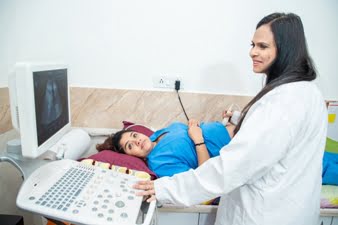Why is the 2nd Trimester Anomaly Scan Important?
The 2nd Trimester Anomaly Scan is a key component of prenatal care. It offers several benefits and helps in early detection of potential issues:
1. Detailed Examination of Fetal Anatomy: The primary purpose of this scan is to provide a detailed assessment of the baby's anatomy. It evaluates major organs and body parts, including the brain, heart, spine, kidneys, stomach, limbs, and face. This helps identify any structural abnormalities early on.
2. Detection of Congenital Anomalies: The anomaly scan checks for congenital conditions such as neural tube defects (like spina bifida), heart defects, cleft lip or palate, and abnormalities in the abdominal wall, kidneys, and limbs. Early detection of these anomalies allows for better planning and management of the pregnancy and delivery.
3. Assessment of Fetal Growth and Development: The scan measures various parameters like biparietal diameter (BPD), head circumference (HC), abdominal circumference (AC), and femur length (FL) to ensure the baby is growing appropriately for its gestational age.
4. Placental Evaluation: It assesses the position and function of the placenta. Conditions like placenta previa (low-lying placenta) can be identified, which may require monitoring and specific precautions as the pregnancy progresses.
5. Amniotic Fluid Assessment: The scan measures the amniotic fluid levels to ensure there is an adequate amount. Abnormal fluid levels (either too much or too little) can be an indicator of potential complications and may necessitate further monitoring.
6. Evaluation of the Cervix and Uterus: The length of the cervix is measured to assess the risk of preterm labor. If the cervix is shorter than expected, it may indicate a higher risk of premature delivery, and interventions may be recommended.
How is the 2nd Trimester Anomaly Scan Performed?
1.Preparation: Generally, no special preparation is required for this scan. It may be helpful to have a slightly full bladder, as this can improve the clarity of the ultrasound images, especially in early pregnancy. However, this is usually less necessary in the second trimester.
2. Procedure: You will lie on an examination table, and a water-based gel is applied to your abdomen to facilitate sound wave transmission. The ultrasound technician then uses a transducer (probe) to capture detailed images of the baby and the surrounding structures. The technician will take various measurements of the baby’s organs and limbs, assess the placenta, and check the amniotic fluid levels. The entire process usually takes about 30 to 45 minutes, depending on the baby's position and the level of detail required.
3. Post-Procedure: The gel is wiped off after the scan, and you can resume your normal activities immediately. The results are usually discussed with you soon after the scan or at your next prenatal visit.
Who Should Consider a 2nd Trimester Anomaly Scan?
The 2nd Trimester Anomaly Scan is a standard part of prenatal care and is recommended for all pregnant women. However, it is especially important for:
1. Women Over the Age of 35: As the risk of chromosomal abnormalities increases with maternal age, women over 35 are often advised to have a detailed anomaly scan.
2. Pregnancies with Abnormal First-Trimester Screening Results: If the first-trimester screening tests (like nuchal translucency scan or blood tests) indicate a higher risk of chromosomal anomalies, a second trimester anomaly scan is essential for further evaluation.
3. Women with a Family History of Congenital Conditions: If there is a family history of genetic disorders or birth defects, this scan helps in early detection and planning.
4. Women with High-Risk Pregnancies: Those with conditions such as diabetes, hypertension, or previous pregnancies with anomalies are advised to undergo a detailed anomaly scan to monitor the current pregnancy closely.









